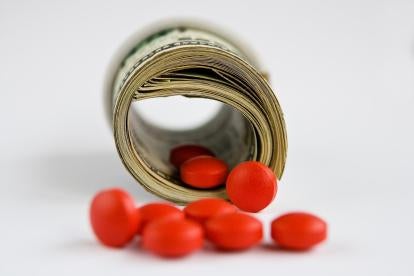In late August 2015, the Second Circuit affirmed summary judgment under the Robinson-Patman Act (RP) for several pharmaceutical manufacturers and their favored purchasers in Cash & Henderson Drugs, Inc., et. al. v. Johnson & Johnson, et. al. Despite years of discovery, the plaintiffs (numerous small pharmacies) who paid higher prices than the favored purchasers (various HMOs and pharmacy benefit managers) could not develop evidence of sufficient lost sales to show the required injury to competition. The case is yet another victory for Robinson-Patman defendants, though only after decades of litigation.
This case grew out of a failed class action originally filed in the early 1990s. These plaintiffs opted out of that matter and filed their own complaint alleging various RP claims against the pharmaceutical manufacturers and their favored purchasers. Numerous legal skirmishes narrowed the claims to a few and the number of plaintiffs to a few thousand. Then in 2010, a couple dozen plaintiffs and five favored purchasers were selected for discovery on sales lost by the selected plaintiffs to the selected defendants, a key element in all the RP claims.
The facts of the case seem to meet most of the elements necessary to show that the sellers violated RP Section 2(a): contemporaneous sales of the same commodities to competing resellers at different prices. One additional, final element – showing that “the effect of such discrimination may be substantially to lessen competition” – can be shown in two ways:
-
Proof of lost sales to favored buyers or
-
Showing substantial discounts to a competitor and relying on the rebuttable Morton Salt presumption that competition must have been injured.
That competitive injury element is also important to the other RP claims made here. To show that the favored buyers violated Section 2(f), plaintiffs must show all the elements of a Section 2(a) violation, including injury to competition, plus that the buyers knowingly induced or received the lower price. Plaintiffs also claimed violations of Section 2(d)’s prohibition of discrimination in promotional allowances or services. While Section 2(d) has a different and smaller set of elements that does not include injury to competition, private plaintiffs seeking damages (like those sought here) must still show “antitrust injury,” a similar concept and one that can be shown through evidence of lost sales.
The sampling of plaintiffs and favored purchasers compared twelve years of data to match customers lost by the former to the latter. The result? Plaintiffs “had lost a minuscule number of customers to favored purchasers”: About three percent of the potential lost customers had switched to a favored purchaser. Comparing these figures to national averages, the Second Circuit panel determined that the lost customers and transactions were about one quarter of one percent of the annual averages for typical pharmacies of this size.
The panel found this amount of lost sales to be de minimis and that de minimis sales were insufficient to meet Section 2(a)’s injury to competition element. For support, the panel relied heavily on the Supreme Court’s 2006 ruling in Volvo Truck v. Reeder-Simco. In that case, the Court spent most of the opinion discussing whether dealers of heavy-duty Volvo trucks competed with each other for RP purposes when most situations had only one Volvo dealer bidding against dealers offering other brands. After setting those situations aside, the Court found only two instances of head-to-head competition between Volvo dealers that resulted in the loss of (at most) one sale of twelve trucks. With little discussion, the Court quickly found that such meager evidence of lost sales “was not of such a magnitude as to affect substantially competition” between the favored and disfavored dealers.
The Second Circuit panel also found implicit support in older appellate court cases that had rejected claims with few lost sales, though it did note that the Third Circuit recently had allowed a claim to go forward in Feesers, Inc. v. Michael Foods, Inc. while explicitly noting only two lost customers. The panel also found that the evidence of de minimis lost sales rebutted the Morton Salt presumption of competitive injury from substantial discounts to competitors. As a result, plaintiffs could not show injury to competition.
Because plaintiffs could not show evidence of injury to competition, their Section 2(a) claim against the discriminating sellers failed. Because a favored buyer cannot be liable if the elements of Section 2(a) are not met, plaintiffs’ Section 2(f) claims failed. As to the Section 2(d) claim, the panel found that the evidence of de minimis lost sales also precluded a finding of antitrust injury, so plaintiffs’ claims for damages under Section 2(d) also failed.
This case is another example of a court reading RP’s numerous technical requirements narrowly and defendants winning. But both sellers and favored purchasers should take note of the twenty years of litigation to achieve that victory.


 i
i


